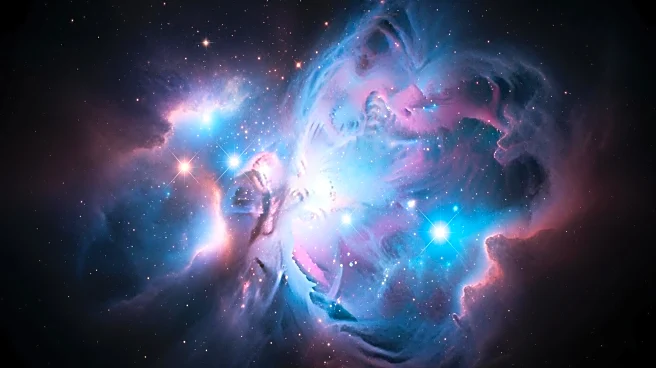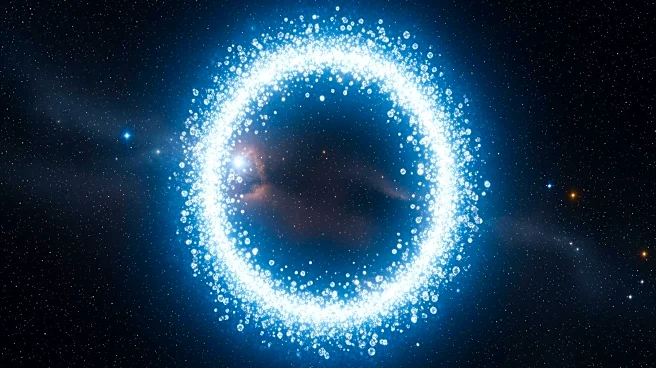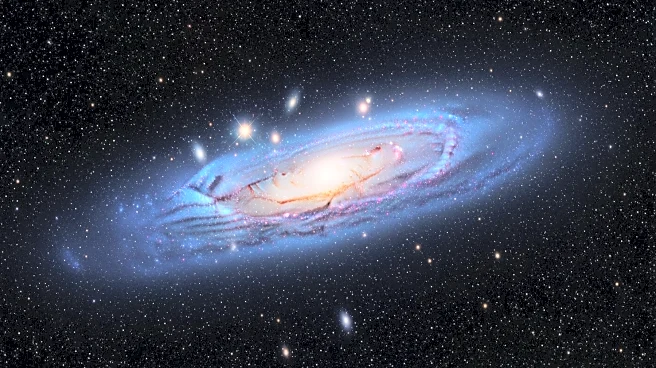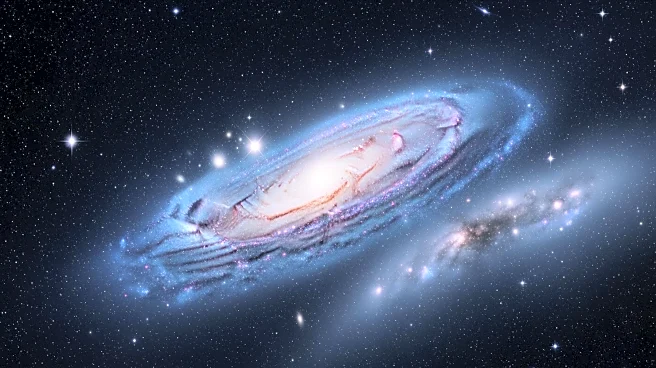What's Happening?
The Euclid Space Telescope has successfully captured a detailed image of the dark nebula LDN 1641, located in the Orion constellation. This nebula is a stellar nursery, where new stars are forming behind
thick clouds of interstellar gas. The image, taken with unprecedented precision, reveals pockets of dense gas actively collapsing to form new stars. The Euclid team used this nebula for telescope calibration, as it lacks bright navigation stars, making it ideal for testing the telescope's pointing system. The image covers an area three times the size of the full moon, demonstrating Euclid's ability to capture vast regions of space and focus on distant, faint objects.
Why It's Important?
This observation marks a significant milestone for the Euclid Space Telescope, confirming its readiness for a full-scale cosmic survey. The ability to capture detailed images of star-forming regions is crucial for understanding the processes of star birth and evolution. Euclid's mission aims to explore the universe's structure and history, addressing key questions in cosmology, such as the nature of dark energy and galaxy evolution. The success of this calibration process ensures that future observations will be executed with extreme accuracy, providing scientists with valuable data about the universe.
What's Next?
With the successful calibration using LDN 1641, the Euclid Space Telescope is poised to begin its full-scale cosmic survey. This survey will provide insights into the universe's structure, including the distribution of dark matter and the effects of dark energy. The telescope's ability to capture detailed images will aid in the study of galaxy formation and evolution, contributing to our understanding of the cosmos. As Euclid continues its mission, it will offer groundbreaking data that could reshape our knowledge of the universe.
Beyond the Headlines
The Euclid Space Telescope's mission extends beyond capturing images; it aims to answer fundamental questions about the universe's composition and evolution. By studying regions like LDN 1641, scientists can gain insights into the processes that govern star formation and the lifecycle of galaxies. The telescope's ability to focus on faint objects opens new possibilities for exploring the universe's hidden wonders, potentially leading to discoveries about the nature of dark energy and the expansion of the universe.











